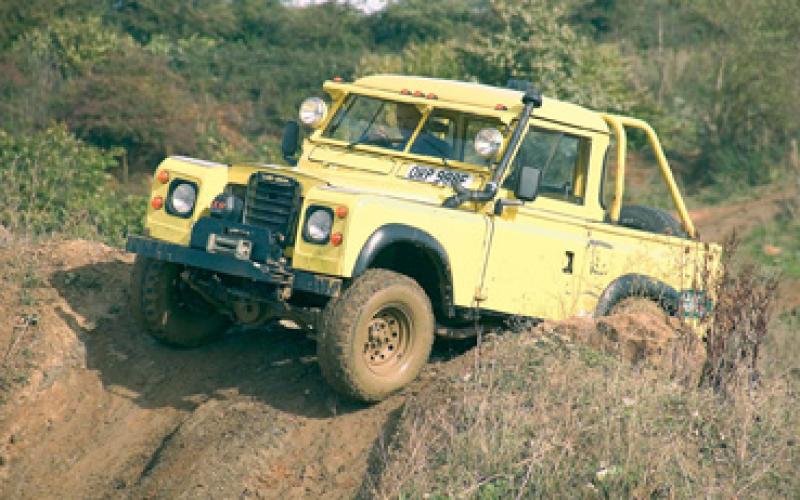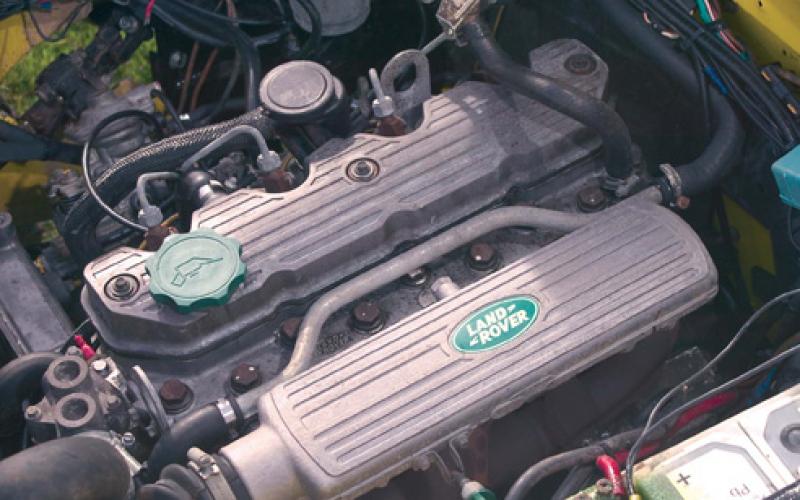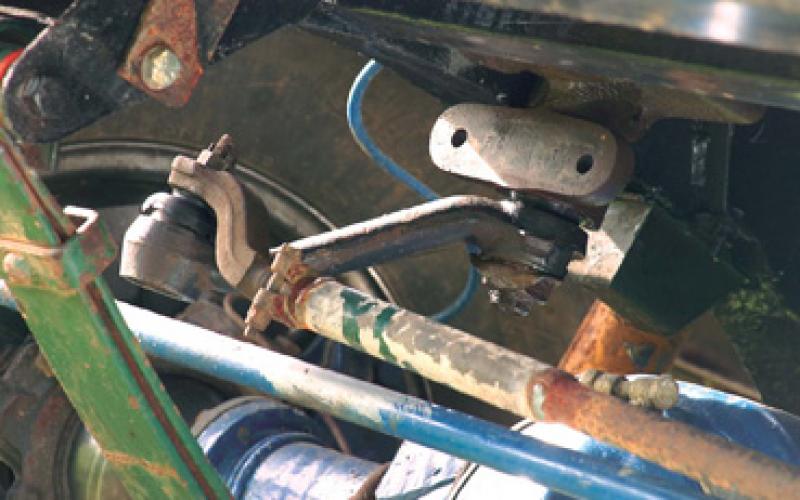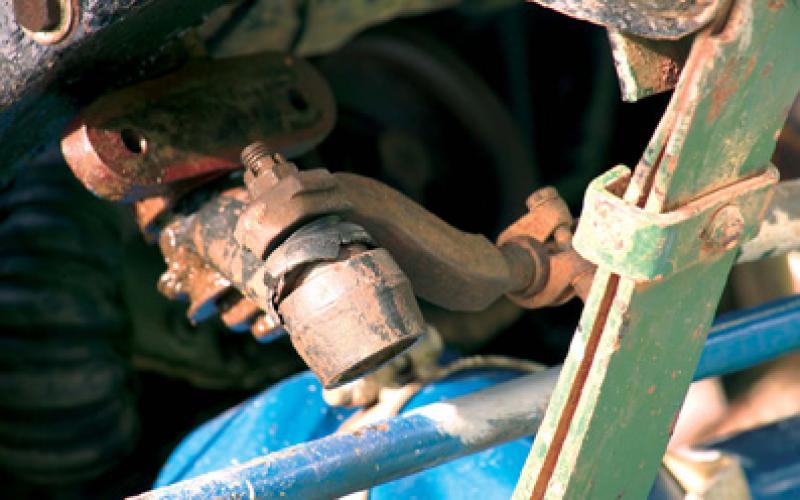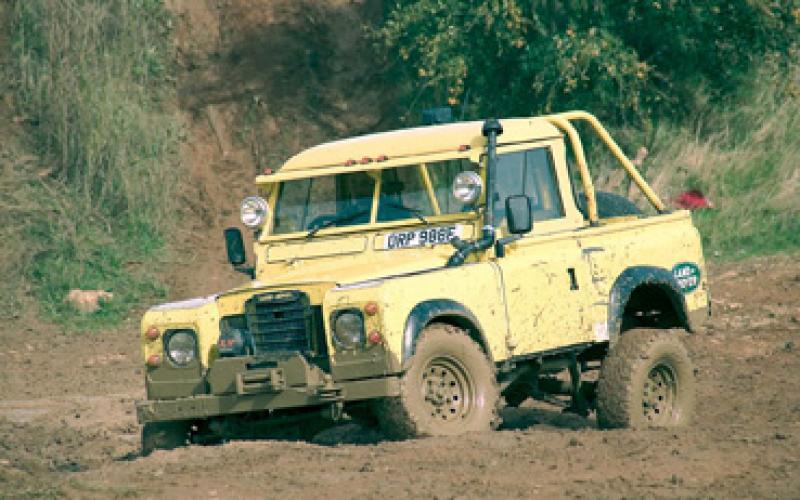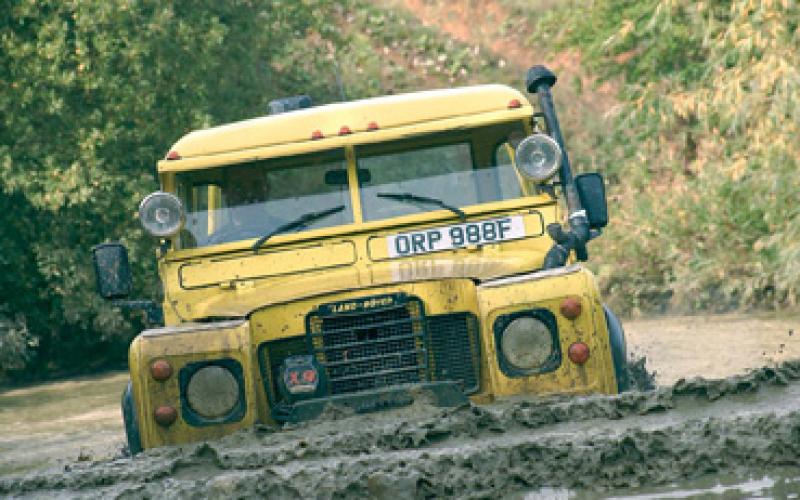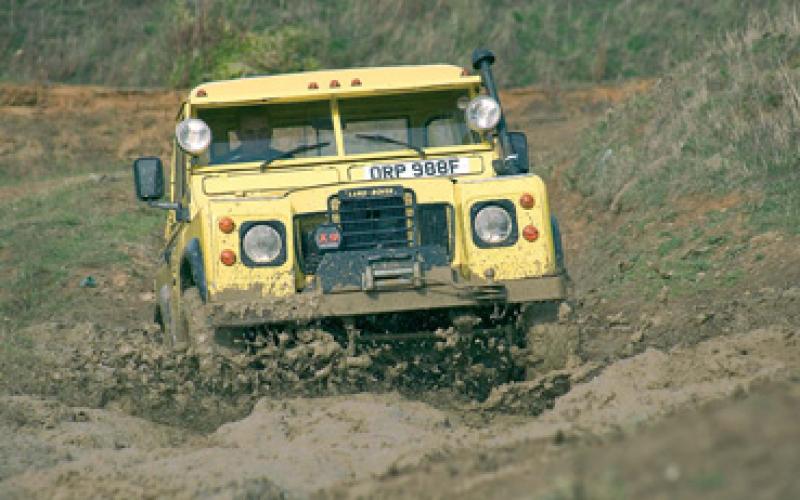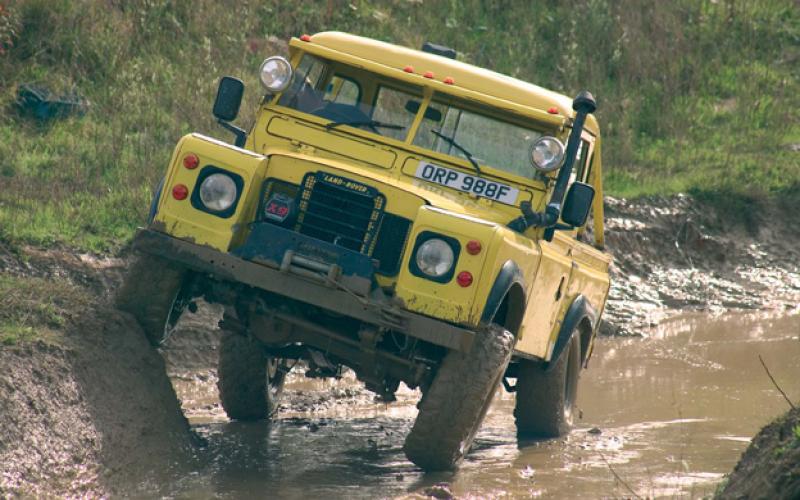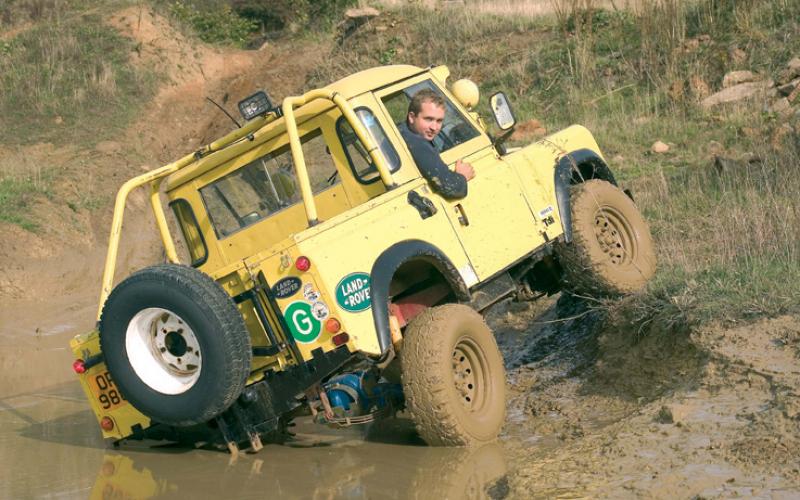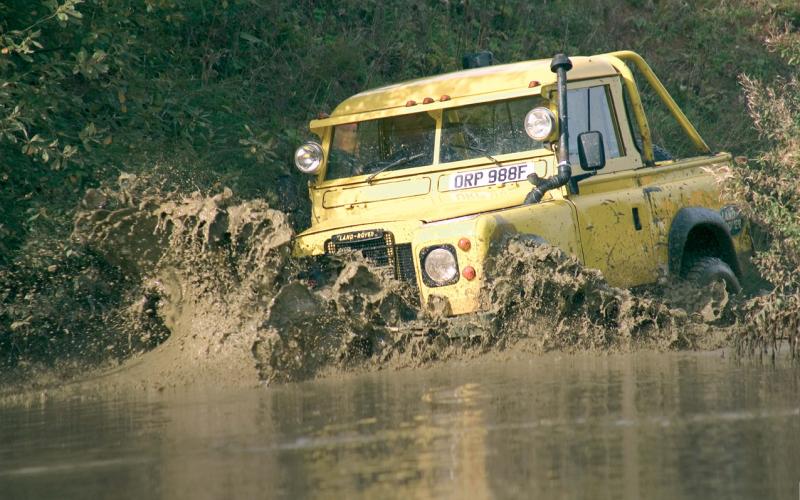Cannonball Run
Pather Cannon is proud of the fact that his Series IIA Land Rover retains its original appearance. That hasn’t stopped him equipping the vehicle for daily use in the 21st Century, though – and turning it into something very special in the process.
When you’re into Land Rovers, it’s not hard to find a topic of conversation that provokes meaningful and highly passionate discussion. Whether you’re wondering about the likelihood of the Discovery 3 still being in regular use in three decades’ time, or the relative merits of the 3.5 and 3.9-litre V8 engines, there’s never any shortage of hot topics with which to maintain the ebb and flow of social intercourse.
One of the all-time favourites is how far a Series Land Rover needs to be modified before it can no longer be regarded as worthy of the name. This sounds like a peculiar tautological teaser, but it actually indicates a germane topic for reflection. After all, if you replace such a vehicle’s leaf springs with coils, stick a different engine beneath the bonnet and install high-back seats, what is the difference between the resultant creation and a 90?
Not much, comes the answer from some quarters, which is precisely why most Solihull devotees regard hybrids as a class of vehicle in their own right. Yet if you look carefully at some of the modified Series Land Rovers out there, such narrow criteria of assessment become rather difficult to maintain.
Consider Pather Cannon’s Series IIA, for example. This vehicle is bright yellow and the original vinyl seats have been replaced with ones that match the exterior. It’s been fitted with a number of non-Series-era engines during the course of its life, and the front bumper is entirely home-made.
Against this evidence, which says the truck should fall into the hybrid classification, is the fact that Pather has gone to considerable lengths to maintain the car’s classic Series appearance. The radiator still sits within a recess, rather than flush with the headlights, it keeps its split windscreen and, most importantly, the axles are still mounted with leaf springs. In terms of both appearance and significant elements of its specification, then, this vehicle is every inch a classic Land Rover… and that’s just how Pather likes it.
‘I bought the car about six years ago,’ he explains, ‘and always intended to use it as a daily driver. It made sense to make it a bit more comfortable, therefore, but I was keen to retain its distinctively Series character.’
When Pather took delivery of the vehicle, it was running with a soft top and beneath the bonnet there was a 2.5-litre petrol engine, which had been installed by the previous owner. This is one of the strongest and most reliable Land Rover engines ever produced, but it isn’t the most economical on fuel. Pather was happy to stick with it for a while, though, because there were other modifications that he regarded as more pressing.
First among these was the Superwinch X9, which continues to adorn the front end. This posed the first home-brew challenge of the project, because Pather did not feel the standard Series front bumper, which was manufactured out of 3mm steel, would be strong enough to cope with the extra strain of the winch. Nonetheless, he did not want to alter the appearance of the car by installing one of the many off-the-shelf winch bumpers that are available.
In the end, Pather decided the best course of action was to fabricate his own replacement bumper. This follows exactly the same design as the original component and thereby maintains the standard appearance. But the new unit is made out of 7mm steel, giving it a great deal more strength. The winch is mounted on a bracket provided by Superwinch, and Pather is very pleased with the set-up, both in terms of how it performs and its cosmetic appearance.
There is also a tow ball mounted on the bumper and this has been designed so that its position can be adjusted. A number of holes have been drilled through the steel and a quick-release mechanism utilised on the towing attachment. This means that it can be placed wherever is most convenient on the bumper for the circumstances at hand.
Simple details like this feature throughout the Land Rover. Pather has worked tirelessly to make it as user-friendly as possible, and he regards the vehicle as an ongoing project.
With this in mind, he replaced the petrol engine with a 2.5-litre naturally aspirated diesel unit in an effort to improve fuel consumption. ‘The diesel lump was certainly more frugal,’ he remarks, ‘but it was extremely slow.’
The extra effort of driving a vehicle that would not make it to the top of an incline in anything other than second gear began to take its toll. What Pather needed was an engine transplant that combined the economy of the diesel with the speed of a petrol engine.
It wasn’t long before he was on the lookout for a Tdi engine from a Discovery. Pather opted for this as the donor vehicle rather than a Defender because they are much easier to find and, as a result of their comparative ubiquity, come with a considerably cheaper price tag.
There is a trade-off, however, since the Disco’s engine bay is designed differently to the Defender’s and the turbo sits a little higher in relation to the rest of the engine. This means it does not fit in to the Series set-up as neatly as a Defender unit, because the turbo has to be repositioned in order to close the bonnet.
Pather, an HGV mechanic by trade, was happy to take on the extra work involved in using one of the cheaper engines, however. Besides, by sourcing a breaking Discovery and selling many of the other useable components, he has actually managed to get hold of the engine with a minimal financial outlay. He still has some bits and pieces from the donor Discovery to sell, but when they find a home he reckons he’ll have almost broken even on the overall purchase of his new engine.
‘I toyed with fitting a V8 for a while,’ he admits, ‘but knew that it would be a silly thing to do in terms of my fuel bills.’ The Tdi engine offers a perfect compromise, he believes, between economy and speed. ‘It’s a pleasure to drive the car with a turbodiesel engine fitted; and I think it’s probably more reliable than a V8 as well.’
The famously bomb-proof standard IIA gearbox, fitted with an overdrive, is bolted on to the engine, and Pather claims to be perfectly happy with this arrangement. The chassis, meanwhile, has been modified around the engine bay in order to make room for a 200 Tdi power steering box and a Range Rover steering column. This makes the Land Rover much easier to manoeuvre both on and off-road, and it also overcomes the wandering tendencies that are common to all pre-Range Rover Solihull products.
Another modification Pather has performed is on the exhaust. When he bought the truck it was running with a stack exhaust in the rear load bay. Pather wasn’t satisfied with this configuration, and it also got in the way of his plans to truck-cab the vehicle. In consequence, he redesigned the exhaust with a modified downpipe – a corollary of the engine work – and a new tailpipe. This now protrudes from the side of the vehicle, just in front of the rear axle on the nearside. It is a very tidy arrangement and has the added benefit of keeping the exhaust out of harm’s way while off-road.
Because of his admiration for traditional Series styling, Pather was keen to retain the standard radiator arrangement rather than follow the more popular route of fitting a flush 90-style grille. This modification had even more than usual to recommend it in Pather’s case, as the extra space on the newer Land Rovers is filled by the intercooler and the radiator. Given that his engine was designed to fit a vehicle of this generation, it would have made the transplant a lot easier to modify the grille in this way.
Pather did not even entertain this option, however, because he prides himself on the fact that his truck is still recognisably a Series Land Rover. ‘It was certainly fun to try and fit the engine in to the smaller space,’ he exclaims, ‘but I managed it and I’m pleased with the result.’
Despite its 200-series engine, the vehicle is still remarkably old-fashioned in many respects. As well as the original gearbox, Pather has fitted a Series radiator, for example, and the servo is from a Series II. The battery, too, is a straightforward unit bought on the basis of price rather than specification.
The truck’s unusual mix of ancient and modern is never more evident than in its suspension configuration. Pather took the decision to install 90 axles in order to take advantage of disc brakes all round. He did not go the whole way, however, because rather than mounting these with coil springs he opted for parabolic leaf springs. Unless you’re a ridiculously attentive axle-spotter, therefore, you’d never tell at a glance that this vehicle is anything other than a very lightly modded Series IIA.
If the parabolics are nonetheless a concession to modernity, Pather justifies his decision to utilise them on the same grounds as his choice of engine. ‘If a vehicle isn’t exactly what you want, it seems acceptable to make it what you want. This car is my daily driver, so comfort is an important element.
The engine and suspension modifications improve this dramatically, and they don’t change the fact that it still looks like a Series Land Rover.’
In many ways, this vehicle features all that is great about classic Land Rovers while overcoming some of their obvious weaknesses. The parabolic springs are not only a great deal more comfortable than standard leaf springs for on-the-road use, but they also flex much better off-road and lead to a significant improvement in axle articulation.
The benefits of this will be improved further if Pather acts upon his desire to fit locking differentials. The constraints of his budget are preventing this course of action for the moment, but he is hoping to find the necessary funds at some point in the future.
Factor in the polished steel modular wheel rims, which are shod with a set of 31x10.50R15 Colway Mud-Terrains, and you have a cosmetically pleasing Land Rover that is also highly capable in the rough stuff. The Colway remoulds offer a great deal of grip in deep mud, and Pather thinks they are perfectly suited to use on Land Rovers. ‘I used to have them fitted to an SJ,’ he explains, ‘but there wasn’t enough weight in this 4x4 to make them bite.’ There are no such worries with the Series IIA, and he even thinks they perform well on the tarmac, bearing in mind their low-cost credentials.
A home-made snorkel was fitted in haste when Pather was at the Billing show and wanted to have some fun in the water. He is not happy with its appearance and would like to get a prettier version fitted, but for now it fulfils its purpose and he regards that as the most important thing.
Other tweaks to the standard specification include aluminium replacement door tops, which are fitted with military-style windows because Pather finds them easier to operate.
The plastic spats on the wheelarches are standard aftermarket components designed for Series vehicles, and a soundproofing kit has also been fitted in the cabin to reduce noise levels. This is particularly important because Pather has stuck with the bare metal of the IIA dash rather than opting for a sound-absorbent plastic fascia.
Once again, however, this is all part of his desire to keep the vehicle as near to a standard Series Land Rover as possible. His philosophy has been that it is fine to adjust those elements of the design that benefit from being updated. But if there are aspects which function perfectly well in their original form, he thinks it is right to leave them unmolested for the sake of retaining the vehicle’s historic integrity.
Whether every Land Rover enthusiast would agree with Pather’s implied assessment of what constitutes a Series Land Rover is surely a matter for debate. At least we can be certain about one thing, however: whether you regard this vehicle as a Series IIA, hybrid or
90-wannabe, there’s no doubting the fact that it is an exceptional piece of kit.
SUPERWINCH X9, SERIES IIA, SERIES LAND ROVER, DIY BUMPER, DIY SNORKEL, DISCOVERY TDI ENGINE CONVERSION, PARABOLIC SPRINGS, COLWAY MUD-TERRAINS




